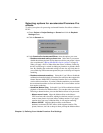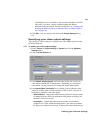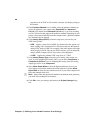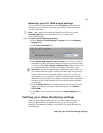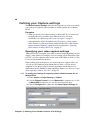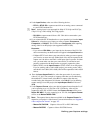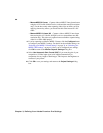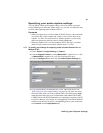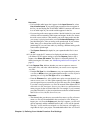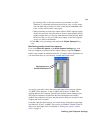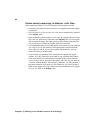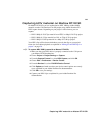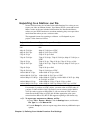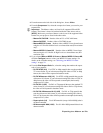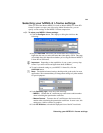32
Chapter 3, Defining Your Adobe Premiere Pro Settings
Remarks
$ If all available audio inputs don’t appear in the Input Source list, select
List all audio inputs. If your audio input connection does not appear in
the list, you must unplug the TO AUDIO CARD IN connector and connect
it to an audio input on your sound card that appears in the list.
$ If your analog audio source appears with an * beside it in the list, your sound
card does not have matching audio inputs and outputs. In this case, choose
the audio source with an * that matches your audio input, make sure that
your source is playing back audio, and click
Advanced Settings. In the
provided dialog box, select an analog audio passthrough. If you can hear
audio, then you’ve selected the correct analog audio source and
passthrough. If you can’t hear audio, try selecting a different analog audio
source and/or passthrough.
$ The Capture Format (bit-depth) for your captured audio files is set to
16-bit.
5 If you don’t want the VU meters to be displayed each time you configure
your Matrox RT.X2 capture settings or open the
Capture panel to start a
capture, clear
Show VU meters. This option is selected by default. For
details on using the VU meters, see “Monitoring audio levels for capture” on
page 33.
6 Under Capture Files, indicate whether you want to capture to stereo or
mono audio files, and select which channels you want to save to separate
.wav files.
$ From the File Type list, select Stereo to save your captured audio to stereo
.wav files, or
Mono to save your captured audio to mono .wav files. If you’re
capturing an .m2v clip, the
File Type will be set to Stereo.
$ From the Filename lists, select which stereo pairs or mono channels you
want to save to your .wav files. When capturing from a DV-1394 device,
you can capture up to two stereo files or up to four mono files. Select
None
if you don’t want a particular .wav file to be created. When Matrox RT.X2
saves each .wav file, it assigns a .Stereo.wav or .Mono.wav suffix to the base
name you gave for the associated video file. For example, if you’ve named
your video file MyFile.avi, the associated stereo audio files would be named
MyFile.Stereo1.wav, MyFile.Stereo2.wav, etc.
Remarks
$ The channels that you choose to save to the first stereo.wav file or first two
mono.wav files will be embedded in the associated .avi file. When you
import your .avi file to the
Project panel, the clip’s separate .wav files will
also be imported, and the embedded audio in the .avi file will be ignored.
The clip’s .avi file and first associated .wav file, however, will appear as a
single Movie clip in your project. The embedded audio in the .avi file will



